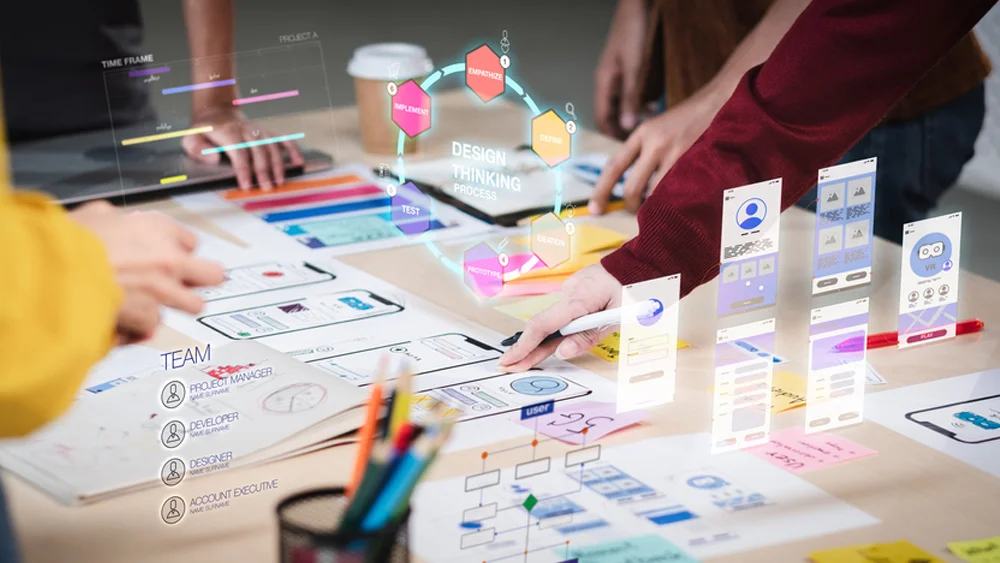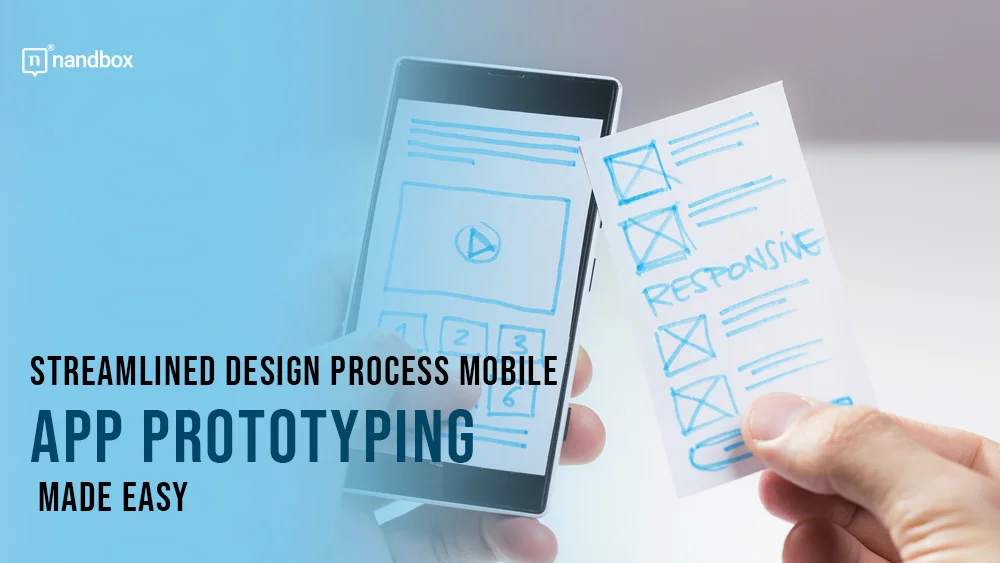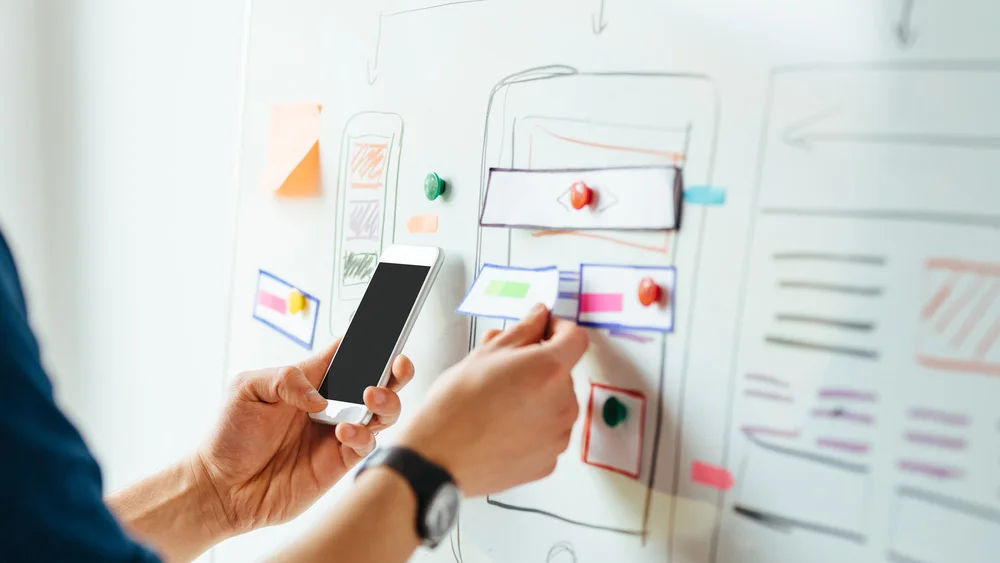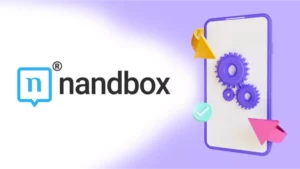In mobile app prototyping, you enter a world where trial and error shape innovation, and abstract concepts evolve into engaging user experiences. To understand the intricacies of this process, explore each layer of the process, its pivotal importance, and how to streamline it for easier and more efficient prototyping.
What Is Mobile App Prototyping?

Mobile app prototyping is the creation of a preliminary model of your mobile application. A prototype is a working model that mimics the functionality and design of your final product. It is a draft version of your app that lets you test and validate your ideas before you dive into full-scale development.
In app development, this process offers myriad benefits. For starters, it allows
developers to test the functionality of their app in a real-world context. This is particularly crucial considering people used their smartphones for 4.8 hours per day on average in 2022.
Prototyping facilitates early feedback from users, letting developers refine the app to meet user needs better. Plus, it can save time and money, as it helps pinpoint issues before they become costly mistakes in the development phase.
Mobile app prototyping has evolved dramatically over the years. Once a domain of rough sketches and static wireframes, it now employs sophisticated tools and strategies. Advanced software platforms allow developers to create interactive, high-fidelity prototypes that emulate the final product closely. With these tools, developers can create more effective prototypes, accelerating the design process and improving the user experience.
The Traditional Design Process of Mobile App Prototyping
The traditional mobile app prototyping design process is a crucial phase in app development. This step-by-step journey encompasses several stages, including conceptualization, sketching, wireframing and creating an interactive prototype:
- Conceptualization: This initial stage involves brainstorming and ideating. Here, you establish the core functionality of your app and define its objectives. For instance, if you are developing a fitness app, your aim might be to help users track their daily exercise and diet.
- Sketching: After conceptualization, create sketches of the app’s interface. These rudimentary sketches — often drawn on paper — provide a basic visual representation of the app layout. For example, the fitness app might have drawings showing a home page, an exercise tracker and a meal planner.
- Wireframing: This stage involves the creation of wireframes, which are more refined blueprints of the app interface. Wireframes delineate the app’s structure and map out the user journey. In a fitness app, the wireframe would outline how users navigate from the home page to record their daily workouts.
- Creating an interactive prototype: Finally, craft an interactive prototype simulating the functionality and aesthetics of the final app. This prototype of a fitness app might feature clickable buttons and swiping actions, providing users with a realistic experience of how the app would work.
The Challenges of the Traditional Process
While the traditional mobile app prototyping process has its merits, it also poses challenges. It can be time-consuming — particularly when the sketching and wireframing stages require multiple iterations. Additionally, this method often lacks user input early on, meaning potential usability issues may not surface until the interactive prototype stage.
Furthermore, paper sketches and static wireframes may only partially capture the dynamic nature of the app. This can leave gaps in the developer’s understanding of how the app will function in a live environment.
Streamlining the Design Process for Mobile App Prototyping
While the traditional design process can be quite time-consuming and complex, here is a more streamlined approach:
- Idea validation: This preliminary stage involves testing the feasibility of your app concept. Using methods such as market research and user interviews, you assess whether your idea will resonate with your target audience. For example, if you are thinking of developing a language-learning app, first ensure there is a demand for your app.
- Rapid prototyping: Instead of the prolonged sketching and wireframing stages, rapid prototyping swiftly takes you from concept to a working model. Tools like Adobe XD or Figma can help create a clickable prototype quickly. Say you are designing a recipe app. With rapid prototyping, you could quickly build a model featuring the main page, recipe details page and user profile page.
- User testing: Once your prototype is ready, it immediately goes into user testing. Feedback from users helps identify potential issues and areas for improvement. For instance, if a shopping app user finds the checkout process confusing, you would know to simplify it.
- Iteration: Make iterations of the prototype based on user feedback. This process continues until it aligns with the user’s needs and expectations, leading to a final product that is more likely to succeed.
Overcoming Traditional Challenges
This streamlined approach addresses many challenges of the traditional method. Starting with idea validation ensures the concept is solid before investing time in prototyping. Rapid prototyping reduces the time to reach a working model, and early user testing allows for prompt identification and issue resolution.
Tools and Resources for Mobile App Prototyping
In mobile app prototyping, several tools stand out due to their effectiveness and popularity. For instance, Adobe XD and Figma offer features for promptly creating interactive, high-fidelity prototypes. With Adobe XD, you get voice prototyping, auto-animate and responsive resizing. On the other hand, Figma provides real-time collaboration and supports interactions such as scrolling, device orientation changes and hover effects.
Sketch — another powerful tool — provides extensive wireframing and prototyping. It is easy to use and provides various plugins, Symbols for creating reusable components, and Sketch Cloud for version control and collaboration.
Numerous resources are also available to enhance your skills as you dive deeper. Online learning platforms like Udemy offer comprehensive prototyping and mobile app design courses. YouTube channels like Google Design or UX Mastery share informative tutorials and expert tips.
Additionally, forums like Designer News and Reddit’s r/UXDesign are excellent places to engage with a community of designers, ask questions and stay updated on industry trends. By leveraging these tools and resources, you will be able to excel.
Approaching Mobile App Prototyping With Success
A streamlined design process for mobile app prototyping shines as an ally, making the journey efficient and effective. You can anticipate exciting advancements in this field as you look toward the future.
With innovations like AI-driven design and augmented reality, prototypes will become even more immersive and intelligent. Consider embracing these evolving methodologies and technologies, as the possibilities for what you can create will be truly limitless.






